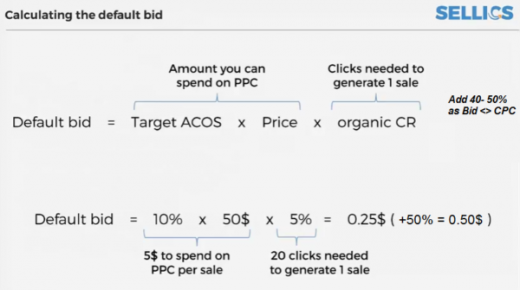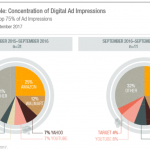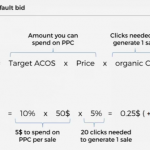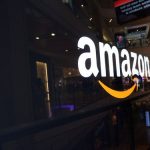How to Set Up Amazon PPC: A 2017 Guide
— June 28, 2017
Amazon Sponsored Products (‘PPC’) can play a huge role in the growth and success of your business. In 2016, sellers using Amazon PPC doubled globally, and PPC clicks grew over 150%. However, it remains that running ads on Amazon continues to be a great source of confusion and frustration for sellers.
When it comes to Amazon PPC, it’s important to understand that there is no ‘perfect’ method to set up an ad campaign. For sellers, there will always be a trade off between a low maintenance campaign structure vs. a time-intensive ‘perfect’ campaign structure that will require you to monitor thousands of keywords per product.
At Sellics, we’ve created an Amazon PPC campaign guide designed to be low maintenance and scaleable, focused on giving you the benefits of granular keyword control in Exact Ad Groups without the need to monitor a large volume of keywords.
The goal is to equip you with the knowledge and key metrics you need to help you optimize your PPC ad spend and ultimately improve your profit margins.
Note: you will want to make sure your product listing is optimized before getting started with Amazon PPC.
Part 1: Define PPC campaign goals
The first step when getting started with Amazon PPC is to define your campaign goals; i.e. why are you running ads on Amazon in the first place?
The two main goals of running PPC campaigns are:
- to maximize profit (you will need to calculate your target ACoS), or
- to maximize sales (you will need to calculate your breakeven ACoS)
Once you’ve defined the goal for your new PPC campaign, you will need to calculate the key metrics that will allow you measure the performance of your ads.
Key metric 1: Determine your break-even ACoS
The ACoS (Advertising Cost of Sale) is a key metric used to measure performance of PPC campaigns. ACoS indicates the ratio of ad spend to sales:
ACoS% = ad spend ÷ sales
The break-even ACoS refers to your profit margin before your ad spend is taken into account. As a seller, you won’t incur a loss for a product as long as your ad spend is less than your profit margin.
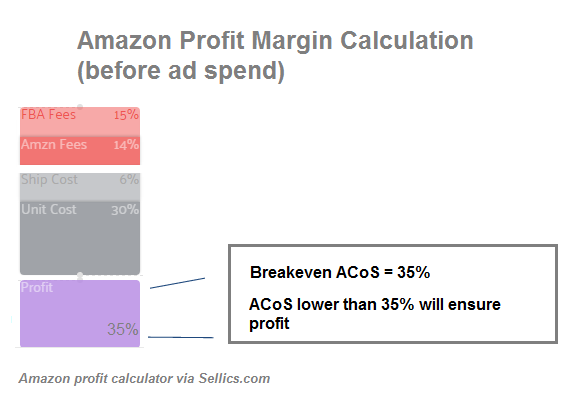
In the example above, your profit margin is 35%. This is also your breakeven ACoS, and as long as you don’t spend over 35% on PPC to promote your product, you won’t lose money.
Note: As you make more sales via PPC ads, this will also help to boost the organic rankings of your product. You will want to estimate how many extra sales you’ll make via organic sales, and add it to your break-even ACoS.
Key metric 2: Determine your target ACoS
Your target ACoS refers to your target ad spend. By defining the net profit margin you wish to make for each product, you can also define the maximum amount you wish to spend on ads for your product.
Using the above example of a breakeven ACoS of 35%, if you wish to make a profit margin of at least 10% before ad spend, you should only allocate 25% of your profit to your ad spend, which is your target ACoS.
Part 2: How to structure your PPC Campaign
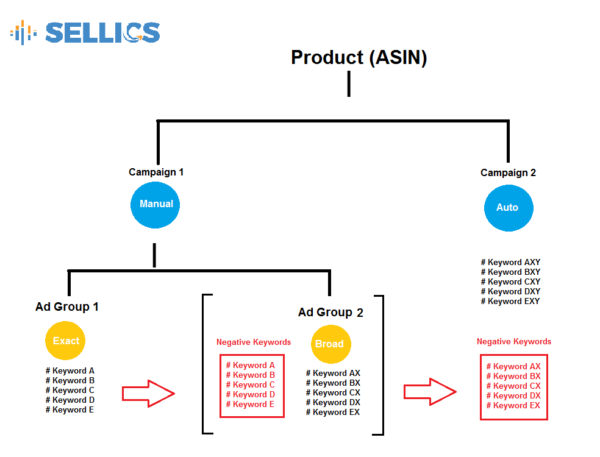
For each ASIN, you will create an auto campaign and a manual campaign. We recommend sellers to set up their manual campaign first, followed immediately by their automatic campaign. The entire process should take about 20-30 minutes.
1. Create your manual campaign (goal: generate profit)
For your manual campaign you will want to create two Ad Groups; Broad and Exact. We recommend sellers to use Broad and Exact match types only. Based on our internal research, we found that the search terms discovered in your Phrase Ad Group will most likely be found in your Broad Ad Group as well.
Therefore, in order to help sellers simplify the campaign setup process, our recommendation is to skip Phrase Ad Group altogether. Of course this is only our recommendation, you can choose to include Phrase Ad Groups if it is your personal setup preference.
Set up your Exact Ad Group
The keywords in your Exact Ad Group are the most relevant keywords for your product, and as a seller you will already know of a few keywords that you will want to bid on immediately. Therefore, we recommend sellers to set up their Exact Ad Group first.
The challenge here is finding an effective way to quickly scale this list, and avoid the risk of bidding on irrelevant keywords in your Exact Ad Group.
- Step 1: Use Sonar (free Amazon keyword tool) to pick the top 20-50 keywords for your Exact Ad Group
With Sonar you eliminate the risk of bidding on irrelevant keywords, as the keywords displayed in Sonar are pulled from real search terms used by Amazon customers. Comparatively, if you were relying on Google AdWords for your keyword research, you risk bidding on keywords that are simply not relevant to the search queries of Amazon customers.
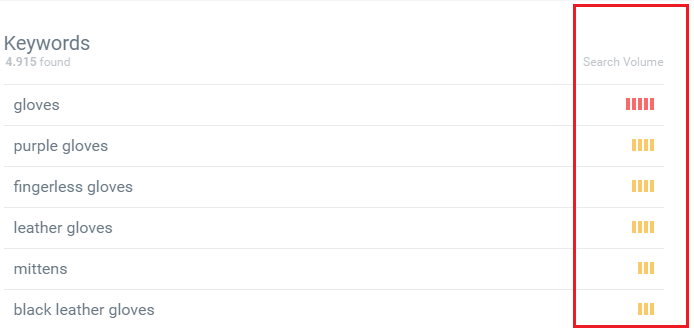
Importantly, with Sonar you also have the ability to sort keywords by search volume, allowing you to prioritize the relevant keywords for your product.
- Step 2: Set the default bid for your keywords
Your optimal default bid is the maximum amount you can afford to spend on an ad to generate one sale. You do not want to be outbid on the keywords in your Exact Ad Group that are converting well for your product.
Relying on the assumption that your organic sales and PPC sales have the same conversion rate, our formula below helps you calculate exactly how much you can afford to spend on PPC in order to generate one sale.
How do I calculate my default bid?
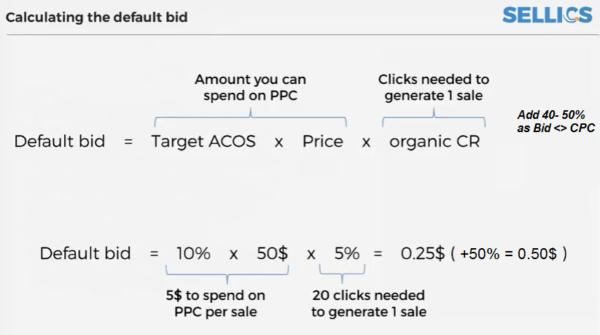
Important note: Your CPC bid (the amount you actually pay for) is not the same as your default bid (the max amount you’ve agreed to pay for).
From our research, we’ve found that the CPC bid is on average 40-50% lower than your default bid. For example, if your actual CPC was $ 0.25, we would recommend you to add another 50% to your default bid so you end up bidding $ 0.50 as calculated. Remember, the goal here is to bid aggressively.
Set up your Broad Ad Group
For the keywords in your Broad Ad Group, Amazon will cast a wide net for new search terms that match your keyword. For example, with the keyword ‘apple slicer’, Amazon will also show you ‘apple corer’, ‘apple peeler’, and ‘potato slicer’. In your Broad Ad Group, you can clearly tell that only some search terms will be relevant for your product.
- Step 1: Add all the keywords from your Exact Ad Group to your Broad Ad Group.
- Step 2: Set Default Bid (we recommend to simply deducting 20-30% from the default bid you calculated for your Exact keywords.)
- Step 3: Add all your Exact keywords to ‘Negative Exact’ in your Broad Ad Group.
Why move all Exact keywords to ‘Negative Exact’ in Broad Ad Group?
It’s important to understand that the purpose of your Broad Ad Group is to let Amazon find all the relevant search terms in addition to your existing Exact keywords for you to bid on.
For example, when you add the Exact keyword ‘apple slicer’ to your Broad Ad Group, Amazon will also show you relevant search terms such as ‘apple corer’, ‘apple peeler’, etc for you to bid on.
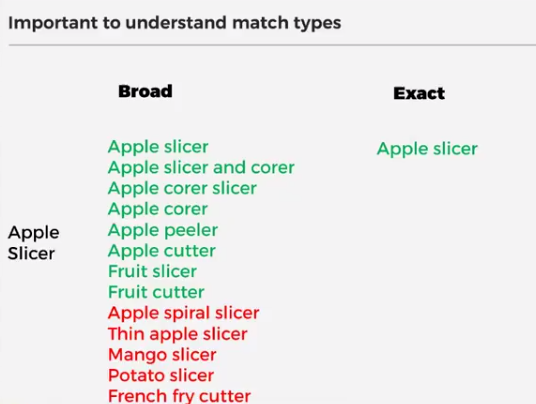
However, you do not want ‘apple slicer’ to show up again in your Broad Ad Group, since you are already bidding on this keyword in your Exact Ad Group. Thus, you would add ‘apple slicer’ to Negative Exact in your Broad Ad Group.
2. Create your Auto Campaign (goal: find new keywords)
Now that you have set up your Manual Campaign, you will find it a fairly straightforward process to set up your Auto Campaign. You will only need to create one Ad Group for your Auto Campaign.
- Step 1: Copy the keywords from your Broad Ad Group into your Auto Campaign.
- Step 2: Set your Default Bid (use Amazon’s suggested bid)
- Step 3: Add the keywords from your Broad Ad Group as ‘Negative Exact’ to your Auto Campaign.
After you’ve set your default bid in your Auto Campaign, we recommend you to deduct 30-40% from your default bid price after you have your relevant keywords running in your Manual Campaign.
Why lower my default bid in the Auto Campaign?
The expectation is that you will eventually be bidding on all your relevant keywords in your Manual Campaign. Therefore, the main goal of running an Auto Campaign is to:
- Collect new search terms with a high impression potential that you may want to add to your Broad Ad Group.
- Find long tail keywords: i.e. bid on the keywords with less search traffic and therefore less competition. Because long tail keywords have a lower CPC, this will allow you to lower your default bid and save some money in your Auto Campaign.
Remember, the goal of PPC campaign optimization is to aggressively bid on the keywords you know convert for you in your Exact Ad Group, and find ways to lower your default bid in your Auto Campaign. This will help ensure your ad dollars are optimized for both campaigns.
Digital & Social Articles on Business 2 Community
(111)

